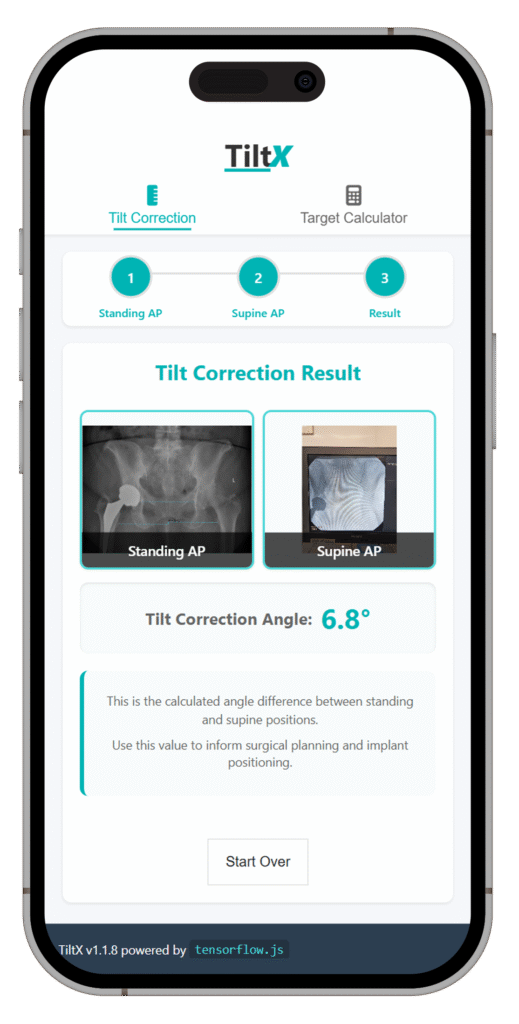ISTA 2025 Podium Presentation: AI-based Prediction Of Pelvic Tilt Change In THA: Validation And Pilot Application Using Paired Radiographs
Koki Abe, Henry Bian, Sarah Kenny, Bill Walter

A Data-Driven Approach to a Clinical Problem
Functional implant positioning requires knowledge of how the pelvis tilts between body positions. Although the average change is about 5–6°, the individual variability can exceed 40°, making general assumptions unreliable. Current alternatives — from skin-based landmarks to intraoperative fluoroscopy — face limitations in accuracy, usability, and radiation exposure.
To address this, a deep learning model was trained on 300 paired standing and supine pelvic radiographs. The AI uses YOLO-based object detection and a custom geometric algorithm to estimate the change in pelvic tilt (ΔPT). The tool is mobile-friendly, running via TensorFlow.js without requiring quantisation.
Results from Validation and Clinical Testing
In initial validation (n = 21), AI predictions of ΔPT were compared to CT-derived references. The AI achieved a mean prediction of 6.30°, closely aligning with the CT-based mean of 6.00°, with strong correlation (r = 0.931, p < 0.001).
A pilot clinical application followed (n = 8). The AI was used intraoperatively with a single fluoroscopic image and a pre-op standing radiograph. The model’s predictions were used to adjust target implant angles in a portable navigation system. Final implant placement errors averaged just 1.1° for inclination and 1.0° for anteversion, suggesting promising clinical utility.
TiltX is only for Research Use.
